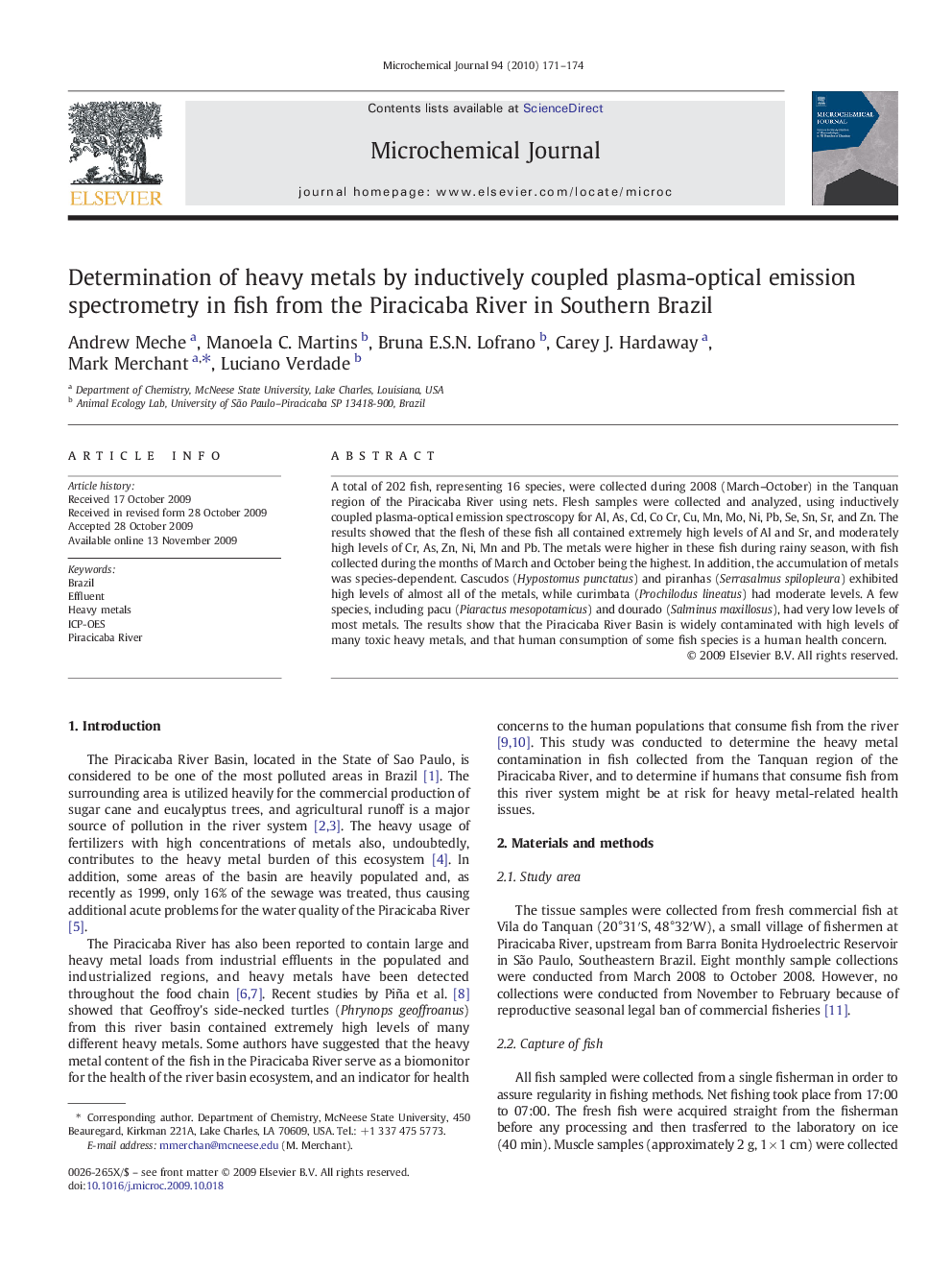| Article ID | Journal | Published Year | Pages | File Type |
|---|---|---|---|---|
| 1228322 | Microchemical Journal | 2010 | 4 Pages |
A total of 202 fish, representing 16 species, were collected during 2008 (March–October) in the Tanquan region of the Piracicaba River using nets. Flesh samples were collected and analyzed, using inductively coupled plasma-optical emission spectroscopy for Al, As, Cd, Co Cr, Cu, Mn, Mo, Ni, Pb, Se, Sn, Sr, and Zn. The results showed that the flesh of these fish all contained extremely high levels of Al and Sr, and moderately high levels of Cr, As, Zn, Ni, Mn and Pb. The metals were higher in these fish during rainy season, with fish collected during the months of March and October being the highest. In addition, the accumulation of metals was species-dependent. Cascudos (Hypostomus punctatus) and piranhas (Serrasalmus spilopleura) exhibited high levels of almost all of the metals, while curimbata (Prochilodus lineatus) had moderate levels. A few species, including pacu (Piaractus mesopotamicus) and dourado (Salminus maxillosus), had very low levels of most metals. The results show that the Piracicaba River Basin is widely contaminated with high levels of many toxic heavy metals, and that human consumption of some fish species is a human health concern.
